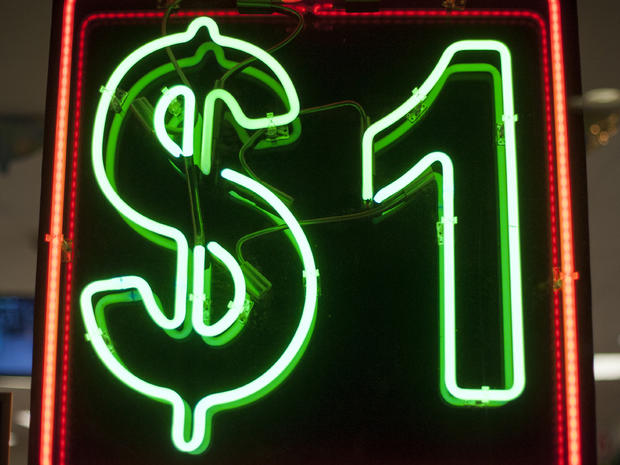The surprising clientele of dollar stores
Although dollar stores may offer a bargain, they're increasingly attracting customers who don't need to count their pennies.
Well-off millennials are turning to dollar stores, attracted by their lower prices and more central urban locations than rivals such as Walmart (WMT) and Target (TGT). Young adults with annual income of at least $100,000 accounted for about one-quarter of all sales at the three big dollar stores for the 12 months ended in April, according to Reuters, citing dating from NPD's Checkout Tracking.
How have these retailers, once seen as catering only to lower-income consumers, managed to expand their clientele? For one, dollar stores are sprucing up their images, signing deals with celebrities like chef Pat Neely, who has hosted two shows on the Food Network and currently promotes Family Dollar. Meanwhile, the social stigma of shopping at dollar stores is fading, according to RBC Capital Markets.
That seems to be convincing well-heeled millennials to turn to the smaller-format stores, even though they don't have to shop there by necessity.
"As years passed and my family grew, I realized I could buy the same items at a dollar store for a fraction of the price," Victoria Marin, 35, told Reuters about her visits to her local Dollar General (DG). Marin's family income is about $150,000.
The trend was highlighted last month in Dollar General's conference call with investors, with CEO Todd Vasos noting that its stores are pulling in more millennial women.
"Today, she represents about 12 percent of our shoppers and 24 percent of our sales. On average, she is shopping our stores about three times a month," Vasos said on the call. "She wants healthy food items, and likes to be on the cutting edge and try new products."
The company said it's redesigning existing stores, and opening new locations, especially smaller-format stores in city locations. That may help it woo young consumers who work and live in cities but don't want to drive out to the suburbs to visit Walmart or other big retailers.
That may help explain why the shares of Dollar Tree (DLTR) and Dollar General have outpaced those of both Walmart and Target during the past five years. The best performing dollar store, Dollar Tree, has returned more than 196 percent since June 2011. Walmart and Target, by comparison, have seen their shares rise 35 percent and 45 percent, respectively, in the same span.
Of course, dollar stores still have plenty of low-income customers. And Walmart, for its part, appears to have snapped out from its slump. The giant retailer's stock has jumped 16 percent so far this year, as investors have taken heart from an uptick in sales spurred by a turnaround plan from CEO Doug McMillon.
But as for dollar stores, there may be more room to grow. Dollar General may see revenue growth of as much as 12 percent over the next several years, RBC Capital Markets said in a May research note.
"The company has broadened its customer base through a combination of low prices and conveniently located stores," analyst Scot Ciccarelli wrote in the report, pointing to a "a reduction in the pre-recession social stigma that surrounded shopping at dollar stores" as one reason.
